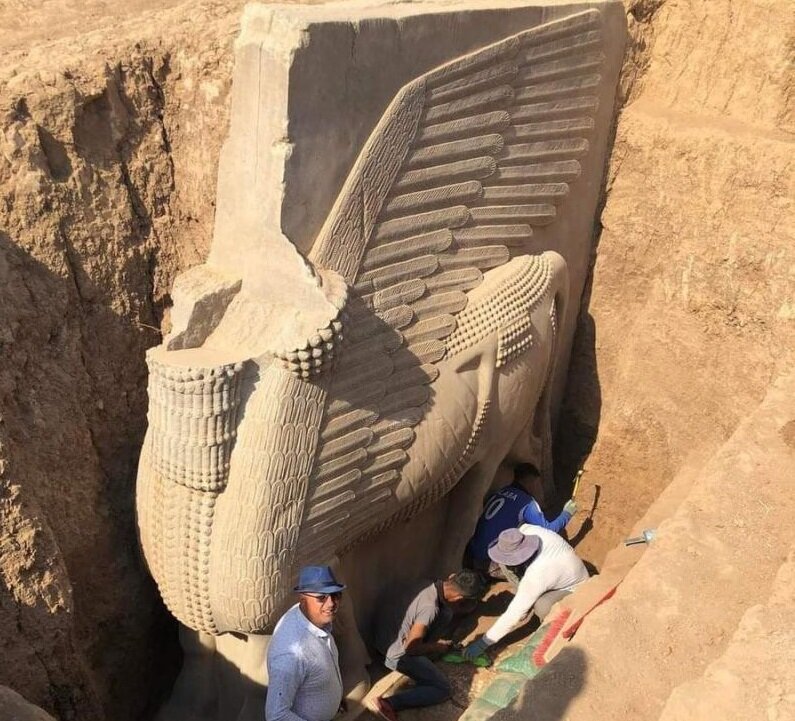2,700-year-old massive sculpture unearthed in Iraq

TEHRAN – An archaeological team has unearthed a 2,700-year-old alabaster sculpture of the winged hybrid sculpture, whose head has been cut off.
Weighing 18 tons, and carved from a single piece of limestone, the sculpture was found on October 24 in northern Iraq.
The statue is said to represent Lamassu, a protective Assyrian deity, often depicted with a bull or lion’s body, eagle’s wings, and a human’s head.
Experts believe such towering hybrid monuments symbolize intelligence, strength, and freedom. Those alabaster deities were usually stationed at the entrances of ancient cities across the Neo-Assyrian Empire, now modern-day Iraq.
“Only the head was missing, and that was already in the collection of the Iraq Museum in Baghdad after being confiscated by customs officers from smugglers in the 1990s,” the dig’s French leader Pascal Butterlin said.
The head of the sculpture was reportedly confiscated from smugglers in the 90s and is currently on show at an Iraqi museum.
“I never unearthed anything this big in my life before,” Butterlin said of the 18-ton sculpture measuring 3.8 by 3.9 meters (about 12.5 by 12.8 feet). “Normally, it’s only in Egypt or Cambodia that you find pieces this big.
“The attention to detail is unbelievable,” added the professor of Middle East archaeology at the University of Paris I Pantheon-Sorbonne.
The sculpture was once erected at the entrance to the ancient city of Khorsabad, some 15 kilometers north of the modern city of Mosul.
“It was commissioned during the reign of King Sargon II who ruled from 722 to 705 BC and erected at the city’s gates to provide protection,” Butterlin said.
Dominated in what is now northern Iraq and southeastern Turkey, Assyria was a kingdom of northern Mesopotamia that became the center of one of the great empires of the ancient Middle East.
Assyria emerged as an independent state in the 14th century BC, and in the subsequent period, it became a major power in Mesopotamia, Armenia, and sometimes in northern Syria.
AFM
Leave a Comment